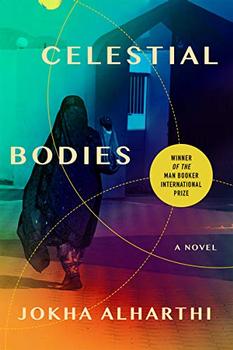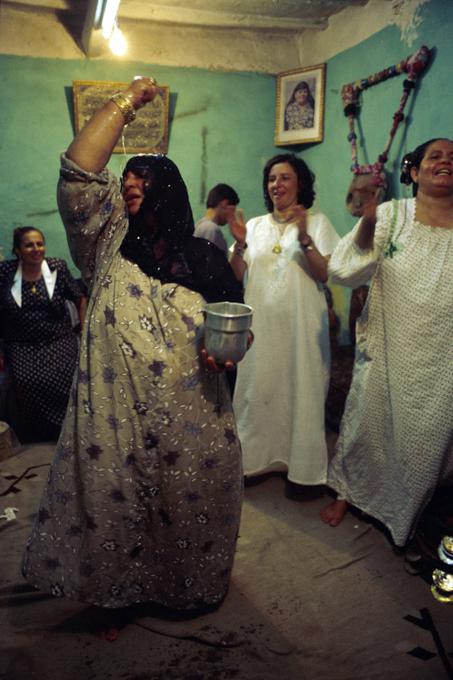Summary | Excerpt | Reviews | Beyond the Book | Read-Alikes | Genres & Themes | Author Bio

This article relates to Celestial Bodies
 Throughout Celestial Bodies there are a smattering of references to zār exorcisms, but little detail is given on what these ceremonies actually are. What becomes apparent, though, is that many al-Awafi villagers look forward to these gatherings.
Throughout Celestial Bodies there are a smattering of references to zār exorcisms, but little detail is given on what these ceremonies actually are. What becomes apparent, though, is that many al-Awafi villagers look forward to these gatherings.
For one character in the book, these exorcisms become a source of entertainment which she anticipates more eagerly than a village wedding: "Those endless ceremonies intoxicated her, everything from the grilled meat and the drinking to the heavy and incessant pounding of the drums, until the ecstasy of it all lifted her outside of herself, beyond consciousness and into one sort of trance or another. In such a state she might walk across live coals or lie beneath horses' hooves or roll in the dirt under the careening circles of dancing bodies."
It is generally believed that Zār exorcism originated in the Horn of Africa around the 1700s and was spread throughout much of the Middle East by Ethiopian slaves.
The term "zār" refers to a malevolent demon or spirit who possesses an individual, more often than not a female member of the village, causing discomfort or even illness. Spirit possession is associated with abrupt changes in a person's habits and identity. Associated symptoms include inexplicable shouting, banging of the head against the wall, laughing, singing or crying. The zār ritual might be performed to exorcise such spirits out of the possessed.
While the exorcism is a spiritual gathering, in contemporary Islamic countries the ritual has become a form of women's-only entertainment, mostly involving married women between the ages of 35–55. Scholars have also noted that today the rituals have come to attract a greater number of middle-class women who feel isolated from their traditional world due to the westernization of Islamic societies.
Over the years, the practice has evolved from simple ceremonies of animal and blood sacrifice to more luxurious events. During the gatherings, women typically enjoy food and drink. Musical performances take place on the tanbūra, the six-string lyre and various other percussion instruments. The entire ritual can last between three and seven nights and often climaxes with ecstatic dancing, which is meant to purify the possessed.
The symptoms once associated with demonic possession are now generally understood to be mental health conditions best treated with psychiatric care. So, in some cases, Zār ceremonies have become less about banishing literal demons and more a symbolic means of purifying the attendees' souls and celebrating their culture.
Click the video below to see an Egyptian musical group performing at a Zār ceremony in 2007.
Egyptian Zār ceremony, courtesy of Qantara.de
Filed under Places, Cultures & Identities
![]() This article relates to Celestial Bodies.
It first ran in the January 8, 2020
issue of BookBrowse Recommends.
This article relates to Celestial Bodies.
It first ran in the January 8, 2020
issue of BookBrowse Recommends.




The purpose of life is to be defeated by greater and greater things.
Click Here to find out who said this, as well as discovering other famous literary quotes!
Your guide toexceptional books
BookBrowse seeks out and recommends the best in contemporary fiction and nonfiction—books that not only engage and entertain but also deepen our understanding of ourselves and the world around us.